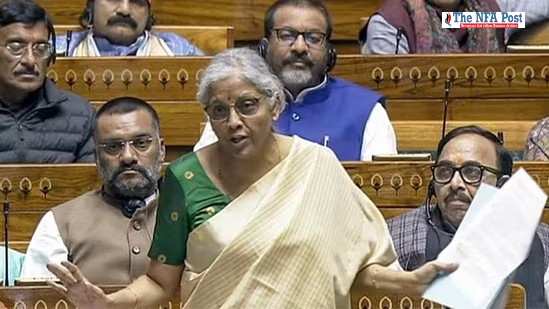The ‘White Paper’ states that the UPA government failed miserably to facilitate economic activities and created hurdles that held back the economy
New Delhi, NFAPost: Union Finance Minister Nirmala Sitharaman on Thursday tabled a ‘White Paper’ on the Indian Economy in the Lok Sabha, which blamed the previous United Progressive Alliance (UPA) government for the “mountain of bad loans” and “double-digit inflation” in the period before the Narendra Modi-led government took charge.
The ‘White Paper’ is aimed at highlighting the alleged economic mismanagement under the UPA government, which was led by the Congress from 2004 to 2014.
‘Inflation raged under UPA govt’
“Inflation raged between 2009 and 2014 and the common man bore the brunt. High fiscal deficits for six years between FY09 and FY14 heaped misery on ordinary and poorer households. Over the five years from FY10 to FY14, the average annual inflation rate was in double digits. Between FY04 and FY14, average annual inflation in the economy was 8.2 per cent,” said the document.
“The UPA government failed miserably to facilitate economic activities. Instead, the UPA Government created hurdles that held back the economy. It basked in the after-glory of the lagged effects of the reforms of the Vajpayee-led NDA government and benign global conditions and proceeded to exploit the resultant fast economic growth for narrow political purposes,” it stated.
The result was a “mountain of bad loans”, a high fiscal deficit despite “much of it being hidden”, a high current account deficit, and “double-digit inflation for five years”, which hit the pockets of many Indians and “membership of the club of ‘Fragile Five’ in 2013,” it added.
Fragile Five was the term issued to India, along with Turkey, Brazil, South Africa and Indonesia, by investment bank Morgan Stanley for allegedly being too reliant on foreign investment to fuel their growth ambition.
‘UPA govt drove investors away’
The economic policies of the UPA government drove investors away from the country, the paper said.
The coalition government “not only failed to impart dynamism” into the economy but also “robbed the economy” of it such that our industrialists went on record stating that they would “rather invest abroad than in India”, it said.
“To drive investors away is easy, but to win them back is hard. The UPA government also demonstrated that it is easier to hurt the economy than it is to help it. They inherited a healthy economy and bequeathed an enfeebled one to us. We have restored its vitality,” it added.
UPA made economy non-performing in 10 years
“The UPA government inherited a healthy economy ready for more reforms, but made it non-performing in its ten years,” the government said in the ‘White Paper’, adding that when the UPA government began its term in 2004, the economy was growing at 8 per cent.
“Ironically, the UPA leadership, which seldom fails to take credit for the 1991 reforms, abandoned them after coming to power in 2004,” the white paper added.
The government also said in the white paper that “little was done by the UPA government to build upon the strong foundation laid by the previous NDA government”.
The paper highlighted several other economic failures under the previous UPA government, including double-digit inflation, mismanagement of public finances and the foreign exchange crisis.
“The UPA government’s decade of governance [or its absence] was marked by policy misadventures and scams,” said the government in its white paper.
Why the ‘White Paper’ now?
The paper states that the central government chose not to reveal the shortcomings of the UPA earlier, as it would have further “shaken investor confidence”.
“In 2014 when we formed the government, the economy was in a fragile state…Our government refrained from bringing out a ‘White Paper’ on the poor state of affairs then. That would have given a negative narrative and shaken the confidence of all, including investors,” it said.
The need of the hour was to attract investments, both domestic and global and to build support for the much-needed reforms, the paper said, adding that the government believed in ‘nation-first’ and not in scoring political points.
“Now that we have stabilised the economy and set it on a recovery and growth path, it is necessary to place in the public domain the seemingly insurmountable challenges left behind as a legacy by the UPA government,” it said.





